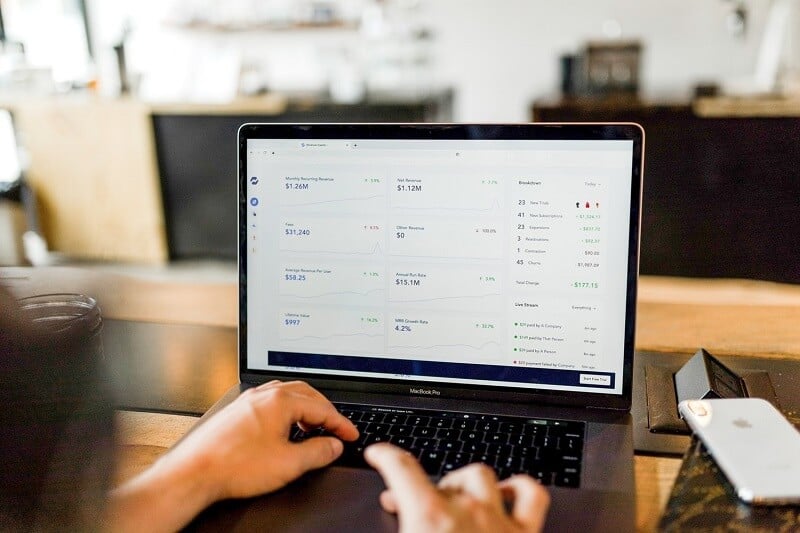
Open interest strategy is based on indicators that traders use to confirm trends and trend reversals for the stock futures and stock options markets.
Do you use an open interest strategy in trading options? What? No? Maybe that is the reason behind your losses. Well, you are not alone, to be honest. Many traders don’t use open interest strategy while trading options. Yes, if you want to be a profitable trader you have to analyze open interest. It is a very important momentum indicator. So, let’s see how you could have better chances to reach profitable trading by using an open interest strategy in trading options. But first, we have to understand open interest.
What is the open interest?
Open interest represents the number of active contracts. It shows how many contracts for options and futures are for the given market. This important indicator shows the strength of the market and measures how actively traded the market is. Someone could say we have the volume for that estimation. Wait! It isn’t the same as volume. There are some differences.
You can notice this data along with current prices, volume, and volatility. But still, so many options traders overlook active contracts, so that can lead to shocking results. They are losing too much money and have too many lost trades.
So, open interest shows the cumulative number of options or futures contracts that are currently traded but not yet cashed by an exercise, offsetting trade or assignment.
How to calculate?
There is simple math to do that when running an open interest strategy. The calculation is: add all contracts connected with opening trades and subtract all contracts connected with closing trades. For example, let’s assume we have 3 traders. Okay, we will give them the names: Anna, Bob, and Connie.
Assume they are trading the same futures contract, in our case study. When Anna buys one contract and enters the long trade, open interest will increase by 1. When Bob buys 5 contracts and goes long too, the open interest will increase to 6. Connie picks to short the market and decides to sell 4 contracts, open interest will increase to ten. Open interest will stay the same until one of them or all exit their positions. In such a case open interest will decline. For example, Anna sold 1 contract and open interest declined to 9. Also, Bob decided to exit his position, he buys back his five contracts, so open interest will be down to 4 and will remain at 4 until Connie decides to sell her 4 contracts.
Volume and open interest
And here is where the volume is different from open interest. While the volume counts all contracts traded, open interest shows how many contracts stay open in the market. So, we can say they are related concepts but different in what is taken into account. Open interest also shows how much money is in the futures or options market. When open interest rises, more money is flowing and when open interest decreases money is going out of the options or futures contracts.
It can be more complicated since the traders are buying or selling from other traders who are selling or buying. You will find that both sides can open their trades and increase open interest. If both sides close their trades, open interest will drop. But if one side of traders is opening the trades and the other is closing that will have no influence on open interest.
That is another difference from the volume. The volume will increase caused by both entries or exits, open interest will increase caused by entries and decrease caused by exits.
Analyze open interest strategy
Open Interest is relevant for both stock futures traders and stock options traders. It displays you where the traders are allocating their money. Therefore, you must have an open interest strategy. To be able to create an open interest strategy you have to analyze the open interest data. We can find a lot of option sellers in the market. It is due to the time decay of the premium of stock options.
Their profit is maximum the premium value of the sold option, but the possibility of losing is extremely big. The option sellers are generally very agile and ready to close their positions quickly in case of any unfavorable change. In the market, we can see the bullish traders selling their put options since they get premium if the price doesn’t run under the strike price. In the same sense, the bearish traders are selling their call options since they get premium if the price doesn’t run over the strike price.
If we notice a high open interest in any stock’s strike price of calls and puts, we should understand these levels as support or resistance areas. It will depend on if the option is put or call.
So, the open interest will confirm the strength of a trend. Rising open interest is a confirmation of the trend. On the other side, reducing open interest can be a signal of a failing trend. Traders are supporting the trend when they enter the market and that raises the open interest. Hence, when traders don’t believe or when they lose confidence in the trend open interest will decrease.
The importance of reports
At the end of each trading day, the open interest data report is published. This report includes all details about open interest from all market players, are they holding long or short positions. These reports provide important info about what all players are doing in the market for futures and options contracts. Traders use open interest strategy to support their decisions. For example, if a trader notices a big move in the open interest he or she knows that particular market players are entering or leaving the position. That may give hints to market direction.
Using open interest strategy
In trading futures, for example, the initial stage of a trend, post-breakout, is not started by trend followers. It is driven by traders who had to liquidate their positions because they were on the wrong side and had to catch the direction of the old trend. The more traders on the wrong side mean the more violent the move post-breakout. Well, you have to understand, if open interest increases during a range-bound action, the transit post-breakout in any direction will be violent. So, if the open interest falls at the start of a new trend, that is the sign that losers are covering their positions.
For example, the price is moving inside the 6 months average levels, but you notice that operating loss has started growing massively. What’s going on? Is the price still in the range? Oh, yes. Let’s examine this more. For example, the company’s average operating loss per share was $5, last week it reached $8 but the price is still in the same range. How is this possible? It is possible by creating new positions but buyers and sellers are in balance, there is no pressure from one or the other side. That’s how the price stays in the same range. For every long trade, there has to be one short trade. What will happen if the price breaks out on the upside?
Short-side traders will hurry to cover their short trades and start the rally. Before long-side traders start the rally. When uptrend is created, comes the trend-followers.
Bottom line
Indicators are important. They tell you what other market players are doing and can provide you to create your trading strategy. An open interest strategy can be used to recognize trading possibilities you might miss. It allows you quickly to enter and exit a trade at the best price. Many traders don’t use this profitable strategy because when they are looking at the whole open interest of an option, they cannot know if the option is sold or bought.
But they fail to catch really valuable information.
Trading means to have all the valuable data before you enter or exit the position. It isn’t gambling. There are some trading patterns and more about some profitable you can read in the “Two Fold Formula” book. Our suggestion is – test it with the our preferred trading platform.


















